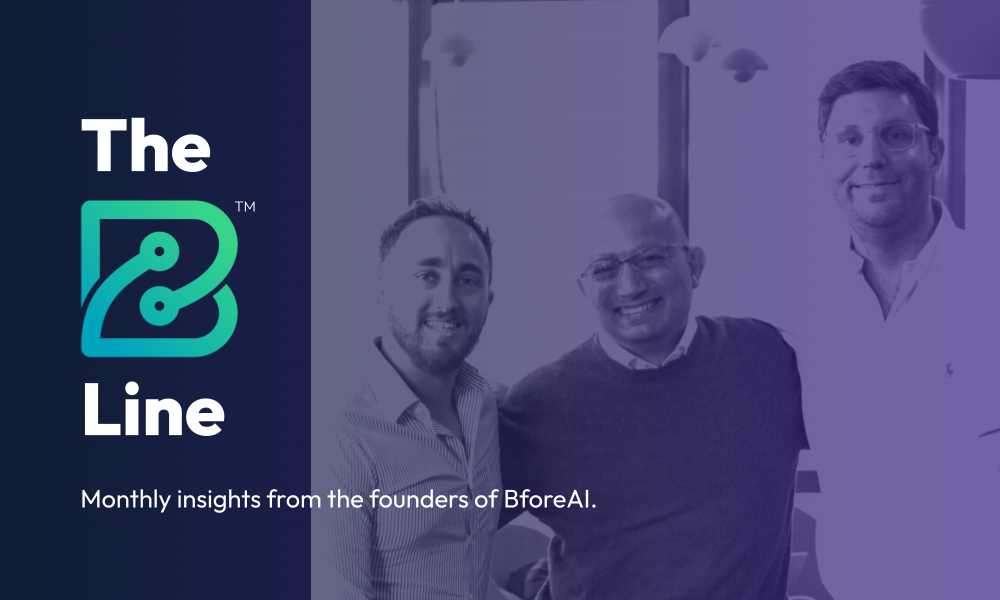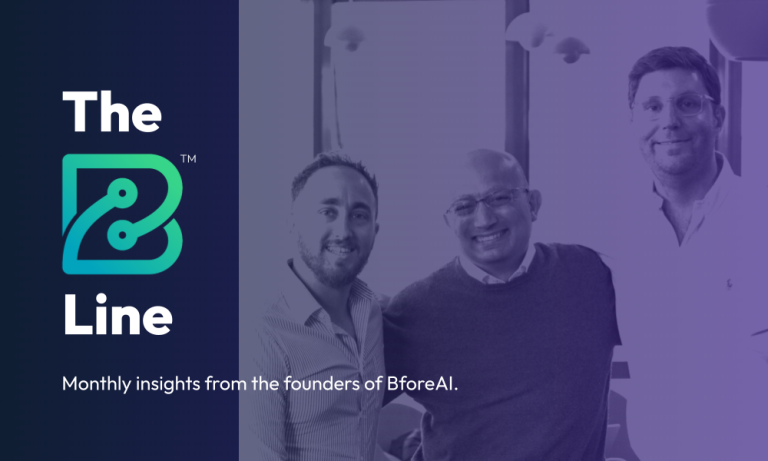Regain Control, Change the Game and Show Business Value with Predictive and Preemptive Security
For years, the cybersecurity industry has largely operated in a reactive mode. We’ve built sophisticated systems to detect breaches, respond to incidents, and recover from attacks. While these measures remain essential, the approach behind them inherently places organizations on their heels, perpetually playing catch-up against adversaries who are constantly evolving their tactics. As I’ve discussed with more C-suite executives and CISOs than I can remember, relying solely on detection and response feels like being trapped in a “victim posture,” a position that is neither sustainable nor strategically sound in today’s high-stakes environment. Let alone the long term mental impact the pressure can produce.
My experience has led me to a firm conviction: the future of cybersecurity lies in prediction and preemption. Those that know me, even a little, know that I have been banging on this drum for some time now, and I’m delighted to see analysts and leading CISO embrace the new perspective.
This conviction is what led to the creation of BforeAI and our focus on PreCrime. It’s a term that might sound like science fiction, evoking images from the movies, but it is very real, grounded in data and behavioral analytics, and powered by prescriptive and predictive AI models. Our goal is simple, yet transformative: to stop threats before they hit your network, before they target your employees, before they impact your customers, stakeholders, and business.
How do we achieve this ambitious goal? It starts with PreCrime Intelligence. Think of it as a global weather forecasting system, but for cyber threats. Just as meteorologists analyze vast amounts of atmospheric data, pressure, temperature, and wind patterns to predict the weather, our system constantly analyzes a blend of open, publicly available data from the entire internet (DNS, IP, BGP, etc.) and results from proprietary calculations on hosts and network changes. This isn’t tapping into private networks or sensitive information; it’s looking at the digital footprint criminals must leave when they prepare their infrastructures for an attack.
For over five years, BforeAI has been uniquely collecting and archiving this huge dataset – information about domain registrations, IP address allocations, configuration changes, digital certificates, and other observable network behaviors. This data, candidly, is often overlooked by others. Many don’t see its immediate value, or they collect it only transiently. But we saw its potential, and we have been storing and processing it meticulously. This five-year historical archive is a crucial competitive advantage; if someone started collecting this data today, they would need years to build the historical depth required for accurate prediction, and all the while, we would be accumulating even more.
Why is this data so powerful? Because adversaries, regardless of their target or method, need to build their attack infrastructure in advance. They need to register domains for phishing sites, set up command-and-control servers for malware, configure systems for launching impersonation campaigns, or prepare infrastructure for data exfiltration. These preparations leave digital footprints. Every day, we observe millions of changes in the internet’s landscape, and our systems score each of them. We see the domains being registered that look benign today but, based on their creation patterns and associated infrastructure, exhibit behaviors highly predictive of future malicious use.
We then apply our patented models and behavioral analytics to this rich telemetry. Our models don’t just look for known bad signatures; they learn the patterns of malicious infrastructure creation and configuration. They can identify the subtle cues that indicate intent and preparation. This allows us to predict threats with remarkable accuracy – our false positive rate is an incredibly low 0.05%. This precision is vital; you don’t need more noise, you need actionable intelligence you can trust.
And the crucial part? We provide this prediction with significant lead time. On average, we identify malicious infrastructure 18 days before conventional cyber threat intelligence (CTI) platforms detect a threat. This isn’t a few hours or even a day; it’s weeks. We see domains registered today that our system predicts will be malicious, and often, they lie dormant for months – we’ve observed that about 60% of the malicious infrastructure we identify becomes active six months or even longer after we flag it. Imagine having that kind of foresight – weeks, even months, to neutralize a threat before it can cause any harm.
This preemptive capability directly translates into powerful, quantifiable business ROI and tangible value for your organization, which is essential when you’re discussing security strategy with the board or the executive team. Security can no longer be seen solely as a cost center; it must be a strategic enabler and protector of business value.
Here’s how PreCrime helps achieve that:
Directly Prevent Financial Loss and Cost Avoidance
This is perhaps the most straightforward and impactful ROI. Attacks like Business Email Compromise (BEC), credential theft, and various forms of fraud (like payments or wire transfer fraud) are often initiated using malicious external infrastructure – fake websites, impersonating domains, fraudulent social media accounts. For industries like financial services, these external attacks represent a significant and constant threat, leading to staggering losses measured in millions. By predicting the maliciousness of the infrastructure being set up before the attack is launched, we enable you to neutralize it. We work rapidly with registrars and hosting providers; our preemptive takedown service has seen malicious domains impersonating brands taken down in as little as seven minutes from the moment of prediction, and 80% of the time before content is loaded. Preventing these incidents means directly avoiding the financial costs associated with the fraud itself, the incident response, potential legal fees, and recovery efforts. It’s not about mitigating damage; it’s about stopping it from happening entirely.
Increase Operational Efficiency and Reduce Strain
Your Security Operations Center (SOC) teams are powerful firefighters, constantly responding to alerts and incidents. But this reactive posture is exhausting and resource-intensive. By using PreCrime to stop threats at their source – before they generate phishing emails that trigger your filters, before malware attempts to communicate with command-and-control servers, before users click on malicious links – you dramatically reduce the volume of alerts and incidents your SOC needs to investigate and manage. Think about the thousands of predicted malicious FQDNs we release daily; imagine stopping even a fraction of those from ever reaching your environment. This frees up your skilled security professionals to focus on complex, sophisticated threats that cannot be predicted, on strategic security improvements, and on preemptive hunting within your network. It helps combat the burnout that is endemic in our industry and optimizes your most valuable, and often scarcest, resource: your expert security talent.
We have designed the PreCrime platform for autonomous operations, to relieve teams of boring admin work (e.g. proof collection, mail header sourcing, etc.), we do not provide a tool for analysts to drown in indicators and decide for action. We provide the outcome directly.
Enhance Brand Reputation and Protect Customer Trust
Impersonation attacks, whether through fake websites mimicking your login page or fraudulent social media accounts scamming your customers or partners, cause severe damage to your brand and erode the trust you’ve worked so hard to build. We’ve seen real-world examples, like how quickly fake news spread via warm accounts on social media platforms can cause significant financial impact, such as the Eli Lilly stock drop incident. PreCrime Brand service-as-a-software actively identifies and enables the disruption of this fraudulent external infrastructure – the fake domains, the malicious social media accounts, the malvertising adverts – before they can be used to scam customers or tarnish your reputation. Protecting your brand is protecting a core business asset, and preemptive defense is the most effective way to do it.
Enable Quantifiable Return on Security Investment (ROSI)
Articulating the value of security investments to the business is a constant challenge. PreCrime provides you with clear, measurable data points. By knowing how many predicted threats targeting your organization or your brand were identified and neutralized before they could act, you can quantify the potential impact avoided. Leveraging industry data on the average cost of different types of incidents, or integrating with your internal risk register, allows you to demonstrate concrete risk reduction and calculate a tangible ROSI. This shifts the conversation from abstract security spending to strategic investment in risk mitigation and business protection.
Beyond the immediate prevention and efficiency benefits, PreCrime enables something more strategic: cyber deterrence. By consistently identifying and disrupting the infrastructure criminals invest time and money into before they can use it to generate revenue – before the phishing campaign delivers credentials, before the BEC scam tricks someone into wiring money, before the malware connects back home – we make attacking your organization a less profitable, more difficult endeavor.
As I like to put it, you don’t necessarily have to be the fastest to escape the bear; you just have to be faster than your friend. By making your organization a harder, less rewarding target due to consistent, early disruption, criminals who are optimizing for ROI and minimizing friction will often choose to move on to easier prey. We have seen with our customers that this preemptive disruption leads to a demonstrable decrease in the volume of attacks directed against them. This isn’t just defense; it’s strategically influencing the adversary landscape.
It’s important to understand that PreCrime is not a replacement for your existing security stack. You’ve invested heavily in detection and response capabilities, and they remain crucial for threats that cannot be predicted or for incidents originating internally. Instead, PreCrime augments and strengthens your current defenses by providing them with predictive intelligence. We feed our malicious infrastructure predictions to partners like DNS resolvers (such as Quad9), anti-phishing filters, and firewalls, enabling them to block threats that haven’t even shown active malicious content yet. This makes your existing tools more effective by reducing the volume of threats they need to contend with.
Our predictive approach also has relevance beyond the most common external threats. We are exploring how to apply behavioral analysis to identify and disrupt emerging threats like the preparation of deepfake infrastructure or the rapid spread of harmful information through malicious social media accounts (WhatsApp, Facebook, X) before they achieve viral impact. We’ve also seen our predictions relevant in identifying malicious communication endpoints associated with compromised IoT devices, like the smart camera exfiltration example. The principle remains the same: identify the malicious intent in the preparation phase, regardless of the final attack vector.
Predictive security, leveraging robust telemetry and advanced AI, is no longer a futuristic concept. It is a necessary and available capability today. It offers you, the security leader, a pathway to move beyond the constant firefighting and demonstrate clear, strategic value to your organization. It empowers you to become a preemptive actor in your defense, reducing risk, optimizing resources, protecting brand value, and making your organization a less attractive target for the economically driven cyber adversary.






